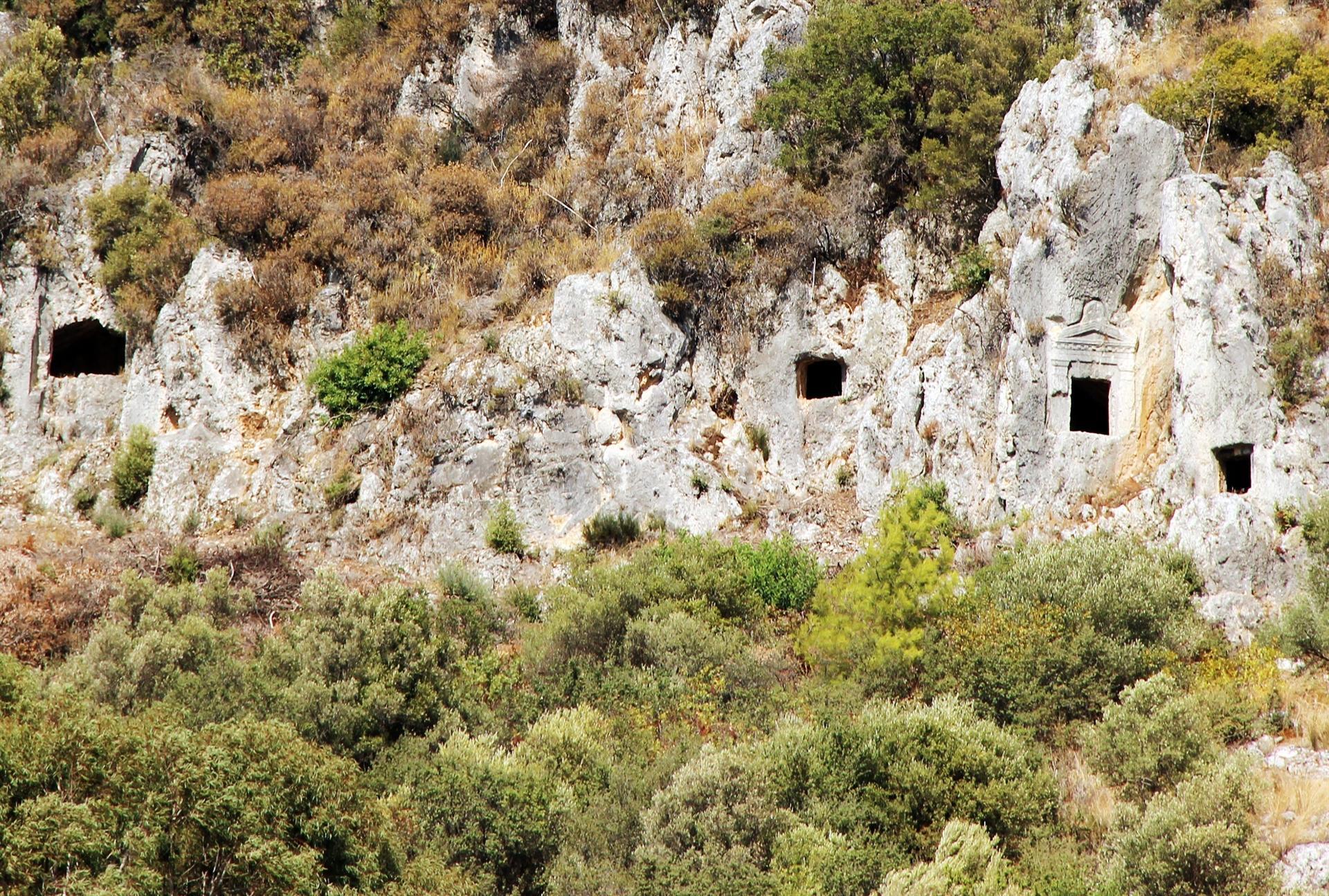
Surveys have begun in the ancient city of Idyma, which was established at an altitude of 250 meters from the sea, on the slopes of the Gökova district of Ula, overlooking the Gulf of Gökova in the southwestern province of Muğla.
Also, excavations have been continuing in the historical Akyaka castle, dating back to the Byzantine period, in the touristic Akyaka district, which had been a neighborhood of the Idyma ancient city in ancient times under the presidency of Muğla Sıtkı Koçman University Archeology Department’s Associate Professor Abdulkadir Baran.
“We started works in the Akyaka Castle, which is a part of the ancient city, as Ula Municipality. As the castle started to attract attention, a team of 30 people will start working here, including 20 workers and 10 teachers,” Ula Mayor İsmail Akkaya said.
Stating that they want to contribute to cultural tourism in addition to the sea, sand and sun of Akyaka, the mayor said: “We will put the castle into the service of tourism after it completely comes to the surface.”
“In 2000, we unearthed the rock tombs in this region by collaborating with the Highways Directorate. We set a date for like one year. But in the future, when artifacts begin to emerge here, I hope that the Culture and Tourism Ministry will also support the works here,” Akkaya added.
[HH] Idyma ancient city
Since Idyma is a name of Anatolian origin, the history of the city is estimated to be very old. While the similarity of its name with the place named “Utima,” mentioned in Hittite texts, supports the ancient origin of the city, Idyma, which is not mentioned much in ancient sources, was called a city in Caria or the city of Idyma near the Idymos river.
Silver coins minted by the city in the fifth century B.C. show its economic development. Although it is suggested that the city is not directly connected to Rhodes and is one of the settlements under its administration, it will be clarified in the excavations to be carried out.
While there is not very clear data on the early history of the city, it is suggested that the fortification system of the city can be dated to the fifth and sixth centuries B.C., especially due to the presence of the Archaic-looking wall lines. During the researches, ceramics dating back to the fifth century B.C. and after were found on the surface.
Although it is not clearly known whether it was on the seashore in the early periods, it had always been an important city with its access to both the gulf and the inner parts of Caria, and its position controlling the intersection point of the valleys, which were transition points in ancient times.
The city, which is located on the southern slope of a hill and has an inner and an outer castle, is a typical Caria city. The lower slopes in the south of the city and especially the rocky parts in the southeast side functioned as a necropolis.